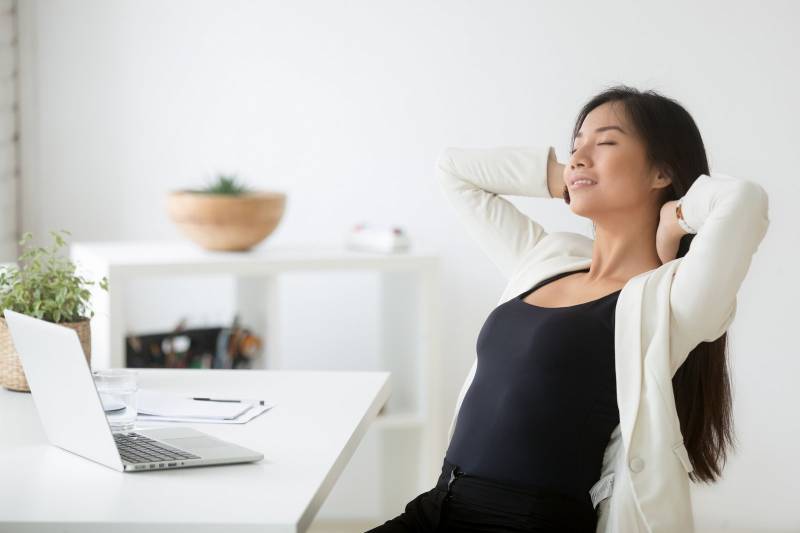Anxiety can negatively impact our lives.
Many of us are firmly gripped by anxiety, which dominates our thoughts and feelings and combines it with the problems we encounter on a daily basis. Coping with anxiety may be extremely taxing. Therapists do, however, suggest certain methods and instruments that might greatly lessen its influence on our day-to-day existence. While these methods don’t guarantee a quick solution, they do provide practical techniques for progressively lowering anxiety levels and regaining control over your life.
The “5-4-3-2-1” exercise
The “5-4-3-2-1” exercise is a basic yet effective method that helps you stay grounded in the here and now. Use all of your senses: List the following: five objects that you can see, four that you can touch, three that you can hear, two that you can smell, and one that you can taste. By breaking up tense thought patterns and focusing attention on the present moment, this technique promotes stability.
Breathing diaphragmatically
One of the simplest yet most successful techniques for treating anxiety is deep, diaphragmatic breathing. It has been tried and proven. It entails taking a deep inhale via your nose, allowing it to fill your abdomen, then gently releasing it through your mouth. By inducing the relaxation response in the body, this simple technique efficiently counteracts the physiological signs of worry by reducing heart rate and alleviating tension.
Using imagination and focused breathing
A powerful anxiety remedy is to combine regulated breathing with visualizing. To begin, locate a peaceful area where you can lie down or sit. Imagine a peaceful scene as you practice taking deep, deliberate breaths—inhaling slowly through your nose and expelling through your mouth. It might be any environment that instills a sense of tranquility, such as a lush forest or a calm beach at dusk.
See the specifics:
Your senses are stimulated by the sights, sounds, and scents to help you completely lose yourself in this mental haven. Observe how this imagery promotes calm when you align your breathing with it. By combining deliberate breathing with vivid images, one can mentally escape from stressful thoughts and cultivate a calm body and mind.
Noting down the things you can control
When anxiety attacks, fears about the unpredictable frequently take over. Therapists suggest this straightforward yet effective exercise: Take out a pen and paper, and write down your worries. Divide these concerns into two columns: those that you can control and those that you can’t. Turn your attention back to practical measures pertaining to the areas you have control over. Your agency over your thoughts and actions is restored when you recognize and take action on the things that you can control. By engaging in this technique, the focus is shifted from helplessness to empowerment, enabling you to plan ahead and take concrete action toward effectively managing anxiety triggers.
Writing in a Journal
By exploring your thoughts and feelings in a safe space, journaling helps you identify patterns, triggers, and coping techniques. Set aside time every day to write unrestrictedly and without fear of criticism. Jot down anything that comes to mind, including your experiences, worries, and thoughts. Examine your entries and note any reoccurring themes or triggers. Utilize your notebook to explore emotions, learn about yourself, and come up with positive solutions to problems. Over time, keeping a journal helps you develop resilience and self-awareness, which will enable you to better understand and control your concerns and maintain emotional equilibrium and overall wellbeing.
Extending and letting go of tension
Not only does anxiety exist mentally, but it also frequently shows up physically as tense muscles and discomfort. Therapists stress the value of using physical relaxation techniques in addition to mental ones. Stretching activities allow your body to relax from the fight-or-flight response while simultaneously relieving tense muscles.
Easy stretches that provide comfort right away include shoulder stretches, neck rolls, and mild yoga positions. Pay particular attention to the back, shoulders, and neck—areas where stress tends to build up. While stretching, take deep, deliberate breaths and let the muscles relax with each exhale. By encouraging the body to release pent-up tension, this intentional movement fosters bodily relaxation and a sense of tranquility.

 Diabetology2 weeks ago
Diabetology2 weeks ago
 Diabetology6 days ago
Diabetology6 days ago
 Diabetology5 days ago
Diabetology5 days ago
 Diabetology5 days ago
Diabetology5 days ago
 Diabetology4 days ago
Diabetology4 days ago
 Diabetology2 days ago
Diabetology2 days ago
 Diabetology2 days ago
Diabetology2 days ago
 Diabetology3 hours ago
Diabetology3 hours ago
















